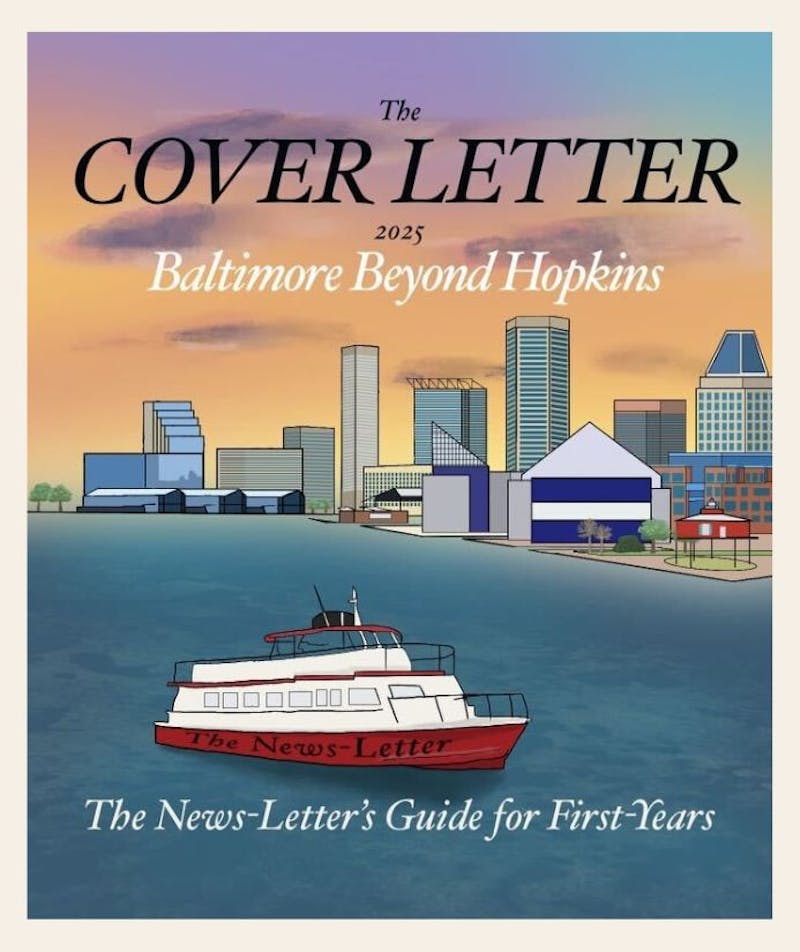"Everyone an Artist?" one of a series of exhibits by Art on Purpose, opened this week in the Mattin Center. Currently, the series is traveling through the Baltimore Collegetown network, one of the sponsors of the event. Peter Bruun, director of Art of Purpose and curator of the exhibit, designed it to provoke thoughts about collective creativity by asking a seemingly simple question: "To be human is to be creative, to be creative is to be an artist - so is Everyone an Artist?"
Denise Tassin served as the resident artist for the exhibit. She grew up in southwestern Louisana and enjoyed fishing with her grandmother, who had her dig up the worms for bait. While sitting in her studio one day, this memory inspired the creation of a worm drawing. The crawlers come from a bait shop and Denise cleans them, coats them in food coloring and places them on canvas. She decides what colors to use, the size of the canvas and the duration of the drawing. Afterwards, the worms are cleaned and returned to the ground unharmed.
The drawings are suspiciously impressive, as if the worms were tempted with promises of rotten fruit or whatever it is worms dream about. The drawings resemble overlapping helixes branching out, like gnarled branches of an ancient tree. Through this approach, Denise hands over control of her works and opts to capture a kind of natural photograph. She chooses the exposure, picture mode and snaps the shot. There is no way for her to know which choices will create the best work. This surrender of control initially seemed surprising from an artist, but the end result justified the means.
Denise's works were shown to painting students at Towson University and the University of Maryland at Baltimore for a lesson in abstract art. The drawings ignited ideas for a number of works that were also on display. Many of the students' pieces demonstrated great talent and ideas playing off of Denise's premise of control and chaos. One student even made a goldfish drawing. It was unquestionably a fish's handiwork.
The theme for the Hopkins installment, "We're Not Alone," centered on drawing machines created by Allison Okamura's freshman mechanical engineering class. The class was tasked with creating a mouse-trap and rubber band-powered car that could slalom down a course for a design competition held earlier this year. Most of the cars resembled ACME products from old Wile E. Coyote cartoons, but they actually functioned. Markers were attached to trace the path, and Bruun saw them as an opportunity to pose another question. How do we view creation from creation, the something from nothing that occurred when the markers traced their path?
Bruun also hoped the exhibits would kindle friendships between the city's college students. Each college is basically an island with sparse intermingling outside of weekends. The social aspect reportedly succeeded on the previous campuses. Several of the Towson artists were on hand for the presentation of their paintings, nearly all for the first time. There were a few Hopkins students as well, though most of them were volunteering for Art on Purpose.
The exhibit also featured other pieces meant to evoke creativity. The traveling dollhouse seemed very interesting from its description - a giant dollhouse traveling from campus to campus being decorated at each stop. Actually, the dollhouse was a hexagon of tall, colored cardboard slates with a doorway cut out. A couple of notable drawings and decorations were on the walls, but the dollhouse hardly received enough attention. Despite a welcoming premise, the dollhouse seemed to subtract more than it added to the environment.
Another great concept that flourished was the set of artist trading cards. Each person was given a blank card on a table of art supplies and told to create a card in exchange for another. The volunteers at the table did a great job of getting everyone to participate. People knelt along the table and set to work creating their cards using Crayola markers, glue sticks and cutouts from magazines. The table displayed huge stacks of cards that ranged from collages to cartoons to song lyrics from students across the city.
Overall, the works accomplished their goal well and caused one to consider, if briefly, the line between imitation and creation. Some might say the worm drawings or mechanical lines are not art. The worms were merely moving and the marks are nothing but trajectories. Perhaps they are just worms and lines and there's nothing between them. But by looking at the students' paintings, one can understand what they saw in Denise's drawings and how they channeled her creativity into their own strokes. If you have any doubt that worms can be artists, go see their work.


